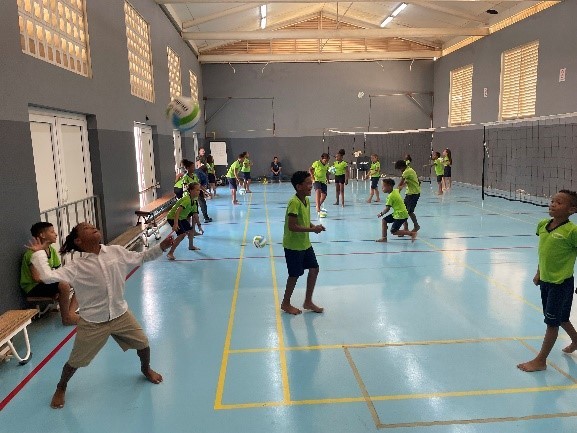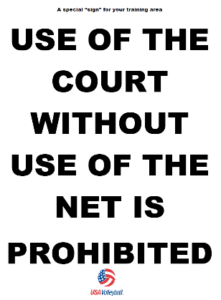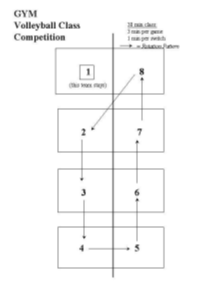
I’m currently in Bonaire, a small island in the Caribbean, helping grow the sport of volleyball here. Watching the kids in a small indoor gym training over three nets, I thought of all the lines we put kids into, the way we ignore the net, the way we inflict pain via the forearm pass and the way 6v6 is experienced by beginners. I get angry inside at knowing billions of kids over my lifetime have walked away from our sport for a lifetime because their introduction to the game is BORING. We must do better when we introduce this sport.
Limit Catch and Throw
Limit catching and throwing as it inhibits learning how to rebound the ball off your own body (throwing is okay at first, but no catching). Allow the youngest to rebound balloons or beach balls, and use the 12U balls on smaller courts as these will hurt less than adult-sized balls. Every age can slap the ball up (higher is better than lower – make the good mistake first), and it only takes a few minutes for that slap to use less palm and more ball-shaped hands and full extension.
 Get Rid of Standing in Lines
Get Rid of Standing in Lines
Stop standing in boring lines and learn in groups of 1-3. Buy more balls at the expense of more nets if need be. Run a net, ribbon or rope lengthwise on each adult court to make 3-8 smaller training courts. Learning the game on smaller courts transfers with both reading and technique to the larger courts.
Get Rid of Six on Six
Six vs six is boring until kids get enough reps over the net for real technique and reading development. Serving dominates and reception is a struggle. They simply play tennis, not three-hit volleyball. To get more kids involved, play 2v2 (preferable), 3v3 or 4v4; none are as boring as 6v6. More involvement, more touches, more learning.
Teach Jump Torque and Roundhouse Serves First Day
If you introduce jumping and hitting the first day, include torque (open the door, slam the door). Emphasize a rigid, consistent contact point (a smooth fist). They’ll control the set to themselves and quickly begin putting the ball over the net. This is also a skill they can practice alone away from any practice.
Superhero, Superhero, Smash
If the first session is short, teach the jump torque serve. If time allows, teach a basic serve and then show “ball shaped hands” and “fly like a Superhero” extension, before getting to the torque jump or standing smash/spike. Demonstrate the spike yourself. They see you and another adult, or the best skilled “setter” athlete in the group, set you a low set (the younger they are, the lower the set will likely happen). and then you demonstrate the standing or jumping spike. You can even let them know they are hitting a set used in the Olympics (a “Bic, or back row quick).
Even when you demonstrate standing 1-2 meters off the net (because it allows for more variance/mistakes by your partner and the ball still stays on your side of the net), the net is still a magnet to them, and they will stand next to it. Keep reminding them to stay off the net. The point is to pass, set and smash over the net. They get hooked by the challenge of spiking.

Delay Teaching the Forearm Pass
Only after they serve, set and smash is it okay to introduce underhand passing. This is even more important if you use adult-level volleyballs, which hurt beginners. This pain can cause kids to quit the sport.

With all your nets up, have the athletes form groups of two or three and let them play. During subsequent practices, be sure to mix up the teams. As the kids develop their skills, allow them to play matches during class while you stop at one court to check for understanding and share skills to practice. This allows them to grow comfortable with keeping score and being competitive. If you can’t play in a gym, play outside on grass, in sand or even a tennis court (hang your rope standard on the fence). All of this and much more is explained for free in English, Spanish or Italian in my MiniVolleyball for Youth book on usavolleyball.org.
While in Spanish, this video, Aprendiamo Volei Mediante Juegos (Learning Volleyball Through Games) demonstrates some great small court balloon and ball games and how to turn one outside concrete basketball court into a 10–court volleyball learning center using rope and sidewalk chalk. YouTube provides some great examples of how exciting the game is for both genders and at all ages. Search for “amazing volleyball highlights” or “Lions Cup 1990 Volleyball” and share with the kids for a couple of minutes during practice so they can train with the end in mind.
